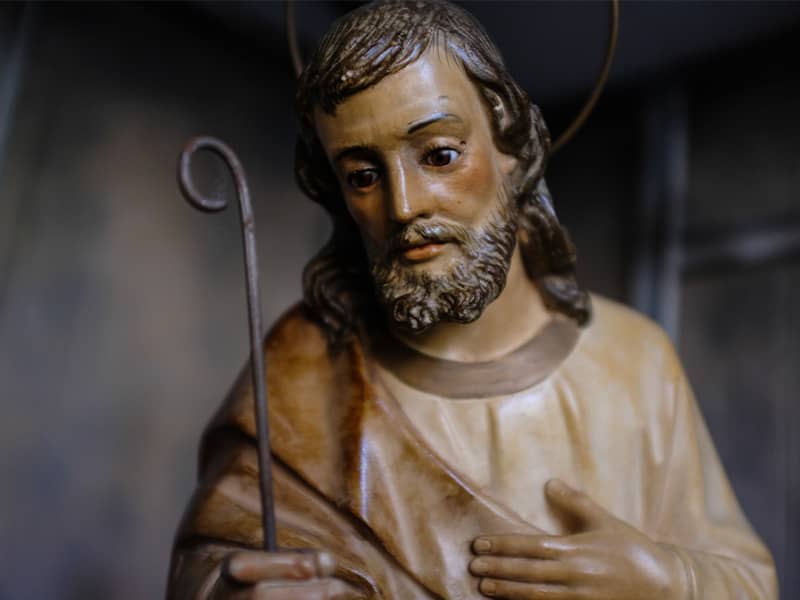But the Immaculate Conception, celebrated on December 8, has become the church's most misunderstood article of faith.
The U.S. bishops dedicated this nation to the Immaculate Conception in
1846. And the 1854 proclamation of the Immaculate Conception is one of only two times in post-medieval history that a pope has claimed to make an infallible declaration.
But today the meaning of that dogma is mired in confusion over who was being conceived and how. TV comics have joked that they knew it was a bad omen when they were married in the Church of the Immaculate Conception. But the dogma is not about sexless conception.
The Virgin Birth, the New Testament claim that Mary became pregnant with God's son through a miracle of the Holy Spirit, is officially upheld by all Christian traditions. But the Immaculate Conception is unique to Catholicism. It holds that Mary was conceived free from the inherited guilt of the first sin committed by Adam and Eve.
"It's very easy to garble this with the virginal conception of Jesus,"
said the Rev. David Poecking, director of continuing education for the
Catholic Diocese of Pittsburgh, who organized Immaculate Conception seminars in honor of Wednesday's anniversary. The Feast of the Immaculate Conception is a holy day of obligation when Catholics are required to attend Mass.
Mary's conception of Jesus is marked on March 25--nine months before
Christmas. But each Dec. 8, "confusion is compounded by the fact that the church tends to use the virginal conception reading on the Immaculate Conception holy day," Poecking said.
That is because the angel's greeting to Mary in Luke 1:28 is considered
an important biblical support for the Immaculate Conception. Some Bibles and a beloved Catholic prayer translate the greeting as, "Hail Mary, full of grace." But theologians debate what that means, and many modern Bibles translate the second phrase as "highly favored."
"There are whole books written on what that Greek participle means,"
said the Rev. Thomas Thompson, who directs the University of Dayton's Marian Library, a repository of research and art about Mary.
However it is translated, the Catholic Church understands it to mean that Mary was not affected by Adam and Eve's original sin in Eden, which doomed the human race to rebel against God. That, the church teaches, is why Mary alone was worthy and willing to bear God's son.
Contemporary Americans can barely conceive of sin as something they do, much less an inherited condition.
"I don't know of anyone who is emphasizing that in the catechetical materials we have today," he said.
But human behavior is so flawed that "original sin is the only doctrine for which we have social science evidence," said the Rev. Thomas Reese, editor of the Jesuit magazine America.
The biblical story of Adam and Eve's rebellion is supposed to explain that "the consequences of sin last generations, they are not just for those who committed the sin. One of the classic examples is slavery. The consequences of that are still with us," he said.
Protestants and Eastern Orthodox reject the Immaculate Conception, because they say it eliminates the need for Mary, like all human beings, to be saved from sin by Jesus. The Catholic response is that Mary was saved in a more powerful way than anyone else.
Blessed Duns Scotus, a medieval theologian who laid the groundwork for the dogma, taught that "a perfect redeemer requires a perfect act of redemption. And to preserve from sin is greater than to rescue from sin," Thompson said.
The Immaculate Conception movement came to a turning point in 1830 when a young French nun, the future St. Catherine Laboure, had a vision of Mary standing on a globe with rays of light emanating from her hands. Around her image were the words "O Mary, conceived without sin, pray for us who have recourse to thee."
In her vision, Catherine was told to strike a medal from the image, and that Mary would protect those who wore it. By 1900 more than 100 million had been distributed. Wildly popular in times of war and plague, the "miraculous medals" promoted the Immaculate Conception.
In 1849, Pope Pius IX sent letters to every bishop asking whether the people and priests would want him to define the Immaculate Conception as a dogma--a doctrine that Catholics must believe. The bishops approved 546-56.
That widespread support was a major reason Pius IX was willing and able to proceed, said the Rev. Francis Sullivan, professor of theology at Boston College, and an expert on papal authority.
On Dec. 8, 1854, Pius declared, "We, by the authority of Jesus Christ
Our Lord, of the Blessed Apostles, Peter and Paul, and by Our Own, declare, pronounce and define that the doctrine which holds that the Blessed Virgin Mary, at the first instant of her Conception, by a singular privilege and grace of the omnipotent God, in consideration of the merits of Jesus Christ, the Savior of mankind, was preserved free from all stain of original sin, has been revealed by God, and therefore is to be firmly and constantly believed by all the faithful."
It was the first time a pope had defined a dogma without convening a council of all bishops, Sullivan said. It was an important step toward the dogma of papal infallibility, which the bishops declared 14 years later at the First Vatican Council.
"In a sense, he was acting on what was even then very commonly understood to be papal infallibility, even though it had not then been defined as such," Sullivan said.
Contrary to popular belief, most papal statements do not claim to be infallible. Only once since 1854 has a pope exercised his power to infallibly define the dogma of the Assumption--the 1950 declaration that Mary was miraculously lifted into heaven.
"Obviously the popes don't do that lightly. There are only very rare instances of the popes exercising their teaching authority in that way," Sullivan said.

